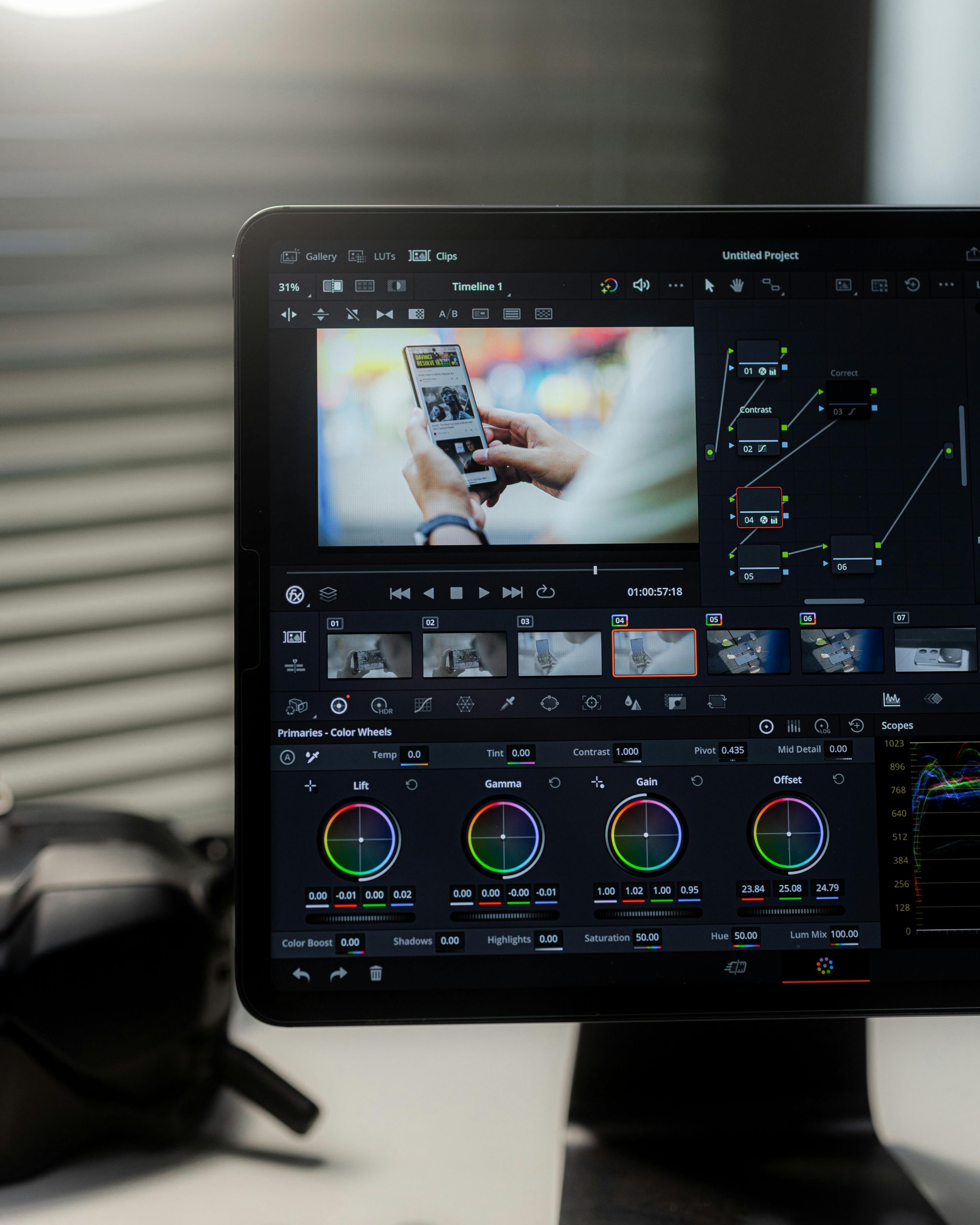Creating a clear video storyboard transforms your ideas into a visual plan that guides every scene. By breaking down complex stories into simple, organized panels, you save time and improve communication with your team. Whether for personal projects or professional productions, mastering easy storyboard steps boosts creativity and ensures your video flows smoothly from concept to final cut.
Essential steps to create a video storyboard for any project
To efficiently tackle the storyboard creation process, start by gathering your script or core ideas, then unleash your creativity and create a video storyboard by outlining major scenes and sequencing them visually. Chart each moment on individual panels—for every panel, sketch the key action or camera angle. Jot down notes beneath each panel to clarify movement, dialogue, or timing, especially if you plan to collaborate or reference the sequence later. This fundamental structure applies to beginners mapping out educational videos, personal projects, or more complex business presentations.
Also to discover : Unlocking marketing potential: the role of computing innovations in revolutionizing the industry
Choosing the right template or digital tool speeds up this process considerably. Platforms now offer drag-and-drop interfaces, integrated AI image generators, scene organization features, and collaborative workflows. These digital storyboard tools let you adapt layouts, tweak timing, and use color-coded annotations for clarity. Whether you create with illustrations, photos, or simple sketches, remember: keep visuals simple but descriptive.
Organizing scenes visually like this can dramatically boost both comprehension and project alignment. Storyboards demystify pre-production by spotlighting timeline, camera movement, and narrative progression. Strong planning saves time during filming or editing, fosters teamwork, and lifts the overall production value. For every type of video—from marketing to short films—storyboarding streamlines communication and evolves your story into a shareable, polished video asset.
Also to see : Transforming uk marketing tactics: the impact of edge computing
The storyboard creation process: foundation and preparation
Defining your video’s purpose and narrative structure
To begin, use the storyboard creation process to clarify your project’s aims. Effective video concept development starts by identifying the key message and audience. Decide on the narrative structure—linear, nonlinear, or modular—to ensure your video’s flow is logical from frame to frame. This early step streamlines pre-production planning for videos, providing a blueprint for each sequence and solid alignment between script and visuals.
Translating scripts and concepts into initial visuals
Transition from script to screen using clear and concise visual script development. Break down the script into individual storyboard panels, focusing on main actions, emotions, and transitions critical to script and storyboard alignment. Sketch or use digital storyboard tools to illustrate scenes, prioritizing clarity over detail to help everyone involved understand the sequence of events. This practical element of the storyboard creation process transforms written intent into actionable visual cues, enabling strong planning of video sequences.
Identifying essential storyboard elements for your specific project type
Different projects require different elements. In animation, indicate timing and camera movement; for commercials, emphasize branding and call-to-action frames. Choose a storyboard template suited to your format—music videos, short films, or social clips—while consistently organizing essential storyboard elements such as shot lists, character positions, and scene transitions. This methodical approach enhances communication and ensures your video concept development and pre-production planning for videos are always in sync.
Step-by-step guide to visual storytelling and planning video sequences
Breaking your narrative into scenes and shot lists
Precision first: Visual storytelling starts by segmenting your script into manageable parts using scene breakdown methods. Each pivotal moment is mapped as a distinct storyboard panel. Planning video sequences involves listing every camera position, action, and dialogue line for clarity. This systematic storyboarding approach transforms a complex script into simple, visual script development blocks you can easily organize and adjust.
Creating a shot list at this stage gives your team a clear shot-by-shot plan for filming. Annotate visuals and note the timing and pacing of each sequence. For example, a practical shot list covers scene number, description, camera angle, movement, and notes about character positioning techniques—critical to keeping the storyboard creation process efficient and logical.
Organizing narrative flow and shot sequence
The step-by-step guide to visual storytelling continues by arranging storyboards to reflect the desired narrative flow. Use visual storytelling frameworks to maintain continuity between scenes. Planning video sequences in this way ensures that each shot sequence logically connects, preventing abrupt transitions. Storyboard panels should be arranged to reflect the intended timeline and sequencing, illustrating how your video will move from opening to closing moment.
Aligning visual elements with dialogue and scene actions
Effective visual script development relies on matching the story’s imagery to key dialogue and actions. Place essential storyboard elements—like character positions and camera movements—directly alongside lines in your visual script. Use scene breakdown methods to outline how visuals and words complement one another, supporting the storytelling intent. This method guarantees each storyboard panel supports not only the plot’s logic but its emotional arc, too.
Choosing the right storyboard tools and templates for your workflow
Precision first: The digital storyboard tools you select impact every stage of the storyboard creation process. Each choice affects shot list organization, seamless pre-production planning for videos, and the clarity of your visual storytelling framework.
Comparing leading online tools: Storyboard That, Boords, Canva, and PlayPlay
Storyboard That offers a vast collection of storyboard templates and emphasizes collaborative storyboard creation, with user-friendly drag-and-drop features ideal for both teachers and professional teams. Boords streamlines the storyboard creation process by integrating real-time feedback, shot list organization, and flexible exporting options, making it a fit for creative agencies prioritizing workflow speed. Canva provides a robust library and free online storyboard makers for designers seeking visually rich, highly customizable layouts. PlayPlay stands out by focusing the storyboard creation process on video storytelling—offering automated animations and collaborative editing, key for marketing and social media content.
Each digital storyboard tool supports visual script development and organizing narrative flow differently—choose based on intended output, workflow needs, and team collaboration preferences.
Using pre-designed templates vs. custom layouts
Storyboard templates speed up the storyboard creation process by offering structured panels, tested for narrative flow and clarity. Free online storyboard makers typically provide these, ensuring that planning video sequences and visual continuity in videos becomes straightforward. For unique branding or creative challenges, custom layouts let you adapt storyboards to non-standard video formats or integrate advanced scene breakdown methods for animation storyboards.
When to use hand-drawing vs. digital storyboarding
Traditional vs digital storyboarding: Hand-drawing is effective for rapid ideation and sketching fast storyboards, especially in early concept development or when nuanced visual notes (like integrating sound cues) are crucial. Digital storyboard tools excel in collaborative storyboard creation, quick revisions, and exporting storyboard files in versatile formats, benefiting pre-production planning for videos and dynamic team workflows. For educational, commercial, and high-volume projects, digital options enhance storyboard scalability and team productivity.
Effective storyboard design: layout techniques and visual clarity
Design principles for clear panel arrangements
High-impact storyboards begin with the right storyboard panels setup. Arrange panels in sequential order, using a consistent layout and spacing to enhance readability. Uniform panels help viewers grasp scene progression quickly, supporting visual continuity in every frame. Organization is key—numbering each panel and providing labeled areas for action, dialogue, and notes streamlines the storyboard creation process, particularly in collaborative environments.
Maintaining structure during storyboard drafting is fundamental. Use grid lines or templates for consistent alignment. This discipline gives clarity to complex narratives and makes revising layouts simpler. For digital storyboard tools, pre-designed templates ensure that every panel maintains proportionality and that essential storyboard elements—such as action, shot descriptions, and notes—are always in place.
Techniques for illustrating scenes and visual continuity
Illustrating scenes for video requires attention to visual continuity in videos. Keep character positioning, backgrounds, and scale consistent from panel to panel. Use clear graphic representation in storyboards with simple lines or shapes for rapid drafting, focusing on conveying motion and flow rather than final artwork. This streamlines the storyboard drafting tips process and supports shared understanding when pre-visualizing scenes.
Adding arrows or directional cues demonstrates movement within the storyboard panels setup. Stick figures and minimal backgrounds can communicate essential actions, saving time for storyboard revision techniques.
Annotating action, movement, and sound cues
Clarity is boosted by annotating each panel. Notes on movement, timing, and camera angles complement visual content, ensuring every team member understands shot requirements. For richer detail, highlight off-screen sounds or transitions using bold text or symbols, supporting best practices for storyboard clarity and actionable communication for production teams.
Real-time collaboration and workflow integration
Collaborative storyboard creation transforms the storyboarding workflow integration, empowering teams to develop a narrative by editing, reviewing, and organizing narrative flow in unison. Storyboarding platforms foster this environment by enabling multiple users to edit, comment, and adjust storyboards simultaneously. This approach strengthens teamwork and reduces the friction that often stalls creative progress.
Features supporting teamwork: simultaneous editing and feedback
Collaborative storyboarding platforms provide real-time simultaneous editing, where contributors can annotate, reposition panels, and suggest changes on the spot. Integrated feedback tools help teams discuss visual script development directly on each frame. These features streamline the collaborative storyboard creation process and synchronize planning video sequences, enhancing the overall organizing narrative flow.
Version control, approvals, and sharing drafts
Advanced storyboarding workflow integration safeguards creative iterations through robust version control. Teams can review previous drafts, accept or reject changes, and facilitate structured approvals. Sharing drafts is frictionless—collaborators use simple export features or allow direct digital access, ensuring organizing narrative flow and efficient collaborative storyboard creation.
Adapting workflows for remote teams and educational settings
For remote teams and classrooms, collaborative storyboarding platforms remove geographical barriers. Teachers and students, or dispersed creative professionals, participate in visual script development and organize narrative flow as if in a shared studio. Such integration supports modern digital education and distributed creative teams, driving engagement and productivity.
Exporting, presenting, and revising your storyboard
File formats and sharing options for different audiences
Exporting storyboard files is a central part of the storyboard creation process. Most digital storyboard tools support formats such as PDF, JPEG, and MP4 animatics. PDF exports are ideal for sharing detailed storyboards with educators or clients, preserving layout and annotations. JPEG sequences work well for quick overviews or embedding into presentations. Advanced platforms also allow online storyboard export and sharing via secure links—streamlining distribution in collaborative storyboarding platforms. When presenting to a wider audience, storyboard export formats should be tailored to the viewer’s needs, ensuring visual continuity and professional clarity.
Leading review meetings and gathering actionable feedback
A streamlined storyboard review process supports project alignment. Organize a storyboard review meeting once the initial version is exported. Use screen sharing to present key scenes, clarify decisions, and solicit actionable feedback. Encourage input from all stakeholders, employing clear storyboard presentation tips such as pausing after crucial story beats, or highlighting new elements. Effective storyboard review meetings ensure that visuals, timing, and narrative are well understood by everyone.
Iterative revisions for final video production approval
Storyboarding becomes a true team effort during iterative revisions. Use storyboard revision techniques like version control and changelogs to document edits. This approach keeps the storyboard creation process traceable and transparent. In each revision, adjust sequences to incorporate fresh feedback and verify that adjustments maintain visual storytelling frameworks. Detailed iteration smooths the path to video production workflow approval, assuring that the exported storyboard files accurately represent the final creative vision.







